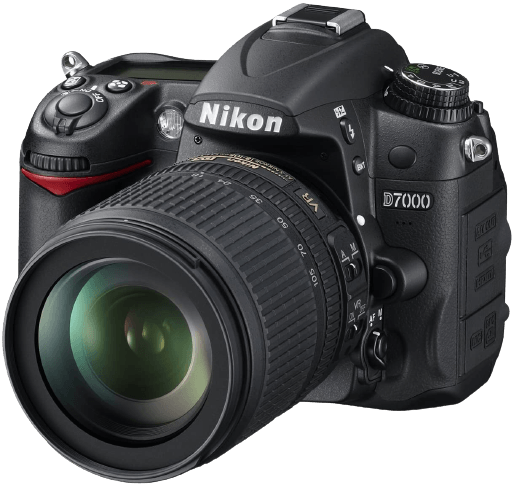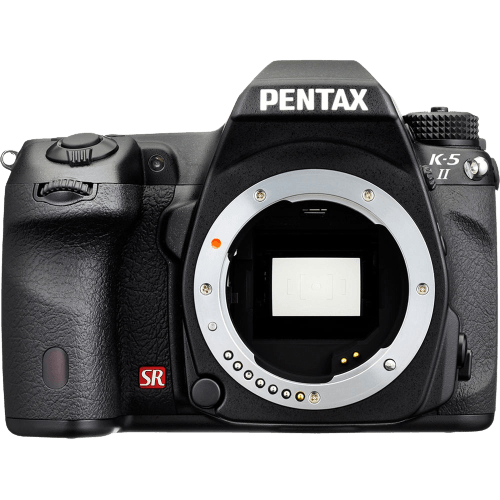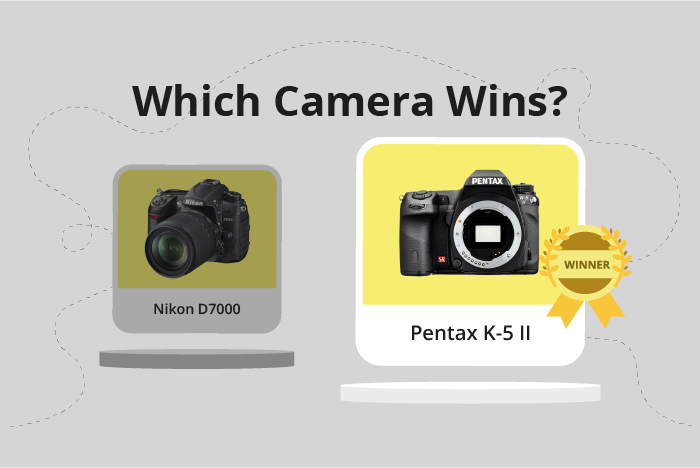Nikon D7000 vs Pentax K-5 II Comparison
Nikon D7000

Pentax K-5 II

The Pentax K-5 II emerges as the winner with a score of 57/100, while the Nikon D7000 trails close behind with a score of 54/100. Both cameras are DSLRs, released in 2010 and 2012 respectively, with the Nikon D7000 having a launch price of $1200 and the Pentax K-5 II at $999. They share similar dimensions, with the Nikon D7000 measuring 132 x 105 x 77mm and the Pentax K-5 II at 131 x 97 x 73mm. However, the Pentax K-5 II has a slight advantage in weight, being 20g lighter at 760g.
The Pentax K-5 II leads with its lower launch price and lighter weight, making it a more affordable and convenient option. The Nikon D7000, however, has its own merits, such as a larger body that may be preferred by some photographers for better handling. Each camera has its unique strengths, and the choice ultimately depends on the individual’s preferences and requirements.
Nikon D7000 vs Pentax K-5 II Overview and Optics
The Pentax K-5 II outperforms the Nikon D7000 in optics with a score of 60/100 compared to the Nikon’s 55/100. Both cameras share some common specifications, including a 16-megapixel CMOS sensor, APS-C sensor size, and similar processors (Expeed 2 for Nikon and Prime II for Pentax).
The Pentax K-5 II has several advantages over the Nikon D7000. It has a slightly higher megapixel count (16.3 vs. 16.2), a faster shooting speed (7 frames per second vs. 6), and a higher DXOMARK score for the sensor (82 vs. 80). Additionally, the Pentax K-5 II features image stabilization, which the Nikon D7000 lacks. These factors make the Pentax K-5 II a stronger choice in terms of optics.
The Nikon D7000, however, has its own set of advantages. It uses the Nikon F lens mount, which offers a wider range of compatible lenses compared to the Pentax KAF mount. This provides more flexibility for photographers when choosing lenses for different shooting situations.
Taking all factors into account, the Pentax K-5 II is the superior camera in terms of optics due to its higher score, faster shooting speed, and image stabilization. However, the Nikon D7000 offers more flexibility in lens selection, which may be an important consideration for some photographers. Ultimately, the choice between these two cameras will depend on the individual’s priorities and preferences.
Nikon D7000 vs Pentax K-5 II Video Performance
The Nikon D7000 and the Pentax K-5 II both have a video score of 57/100, reflecting their equal capabilities in this area. Both cameras feature Full HD video resolution and maximum video dimensions of 1920 x 1080. Additionally, both cameras have built-in time-lapse functionality, making them suitable for capturing creative video content.
However, there are some differences between the two cameras in their video capabilities. The Pentax K-5 II has a slightly higher maximum video frame rate of 25fps, compared to the Nikon D7000’s 24fps. This means that the Pentax K-5 II can capture smoother video footage, which is particularly useful when recording fast-moving subjects or action scenes.
On the other hand, the Nikon D7000 has the advantage of being compatible with a wider range of lenses, giving users more flexibility when it comes to choosing the ideal lens for their video projects. This can be an important factor for those who are serious about their videography and require specific lenses to achieve their desired results.
In comparing the video capabilities of the Nikon D7000 and the Pentax K-5 II, it is clear that both cameras offer similar features, with the main difference being the slightly higher frame rate of the Pentax K-5 II. However, the Nikon D7000’s compatibility with a wider range of lenses may be a deciding factor for some users, depending on their specific needs and preferences. Ultimately, both cameras are capable choices for videography, and the decision between them will likely come down to individual preferences and priorities.
Nikon D7000 vs Pentax K-5 II Features and Benefits
The Nikon D7000 and the Pentax K-5 II both have a feature score of 54/100, making them equal in this category. They share several specifications: a 3-inch screen size, 921,000-dot screen resolution, lack of touchscreen, flip screen, and GPS. However, there are differences in their features that set them apart.
The Nikon D7000 has an advantage over the Pentax K-5 II because it is equipped with WIFI, allowing for easy sharing and transfer of photos. This feature can be beneficial for photographers who need to quickly upload their work or those who want to share their images with others instantly. The Pentax K-5 II lacks this feature, making it less convenient for users who prioritize connectivity and sharing capabilities.
On the other hand, the Pentax K-5 II does not have any features that make it better than the Nikon D7000 in terms of specifications. Both cameras have the same feature score, and the only difference is the presence of WIFI in the Nikon D7000. This means that, in terms of features, the Nikon D7000 is a more attractive option for those who value connectivity.
Considering these points, the Nikon D7000 holds an advantage over the Pentax K-5 II due to its WIFI capabilities. While both cameras have the same feature score and share many specifications, the Nikon D7000’s inclusion of WIFI sets it apart, making it a more appealing choice for photographers who prioritize ease of sharing and image transfer.
Nikon D7000 vs Pentax K-5 II Storage and Battery
The Nikon D7000 wins the storage and battery comparison with a score of 45/100, while the Pentax K-5 II scores 43/100. Both cameras have one memory card slot and accept SD, SDHC, and SDXC cards. Neither camera offers USB charging.
The Nikon D7000 outperforms the Pentax K-5 II in terms of battery life, providing 1050 shots per charge with its EN-EL15 battery. In contrast, the Pentax K-5 II delivers 980 shots using its D-LI90P battery. This difference of 70 shots makes the Nikon D7000 a more reliable option for extended shooting sessions.
Although the Pentax K-5 II has a slightly lower battery life, it still offers a decent number of shots per charge. However, the Nikon D7000’s longer battery life gives it an advantage in this comparison.
To conclude, the Nikon D7000 is a better choice for storage and battery due to its longer battery life, despite both cameras having similar storage options. The Pentax K-5 II falls short in this aspect, but still provides a respectable number of shots per charge.
Nikon D7000 vs Pentax K-5 II – Our Verdict
Are you still undecided about which camera is right for you? Have a look at these popular comparisons that feature the Nikon D7000 or the Pentax K-5 II:

